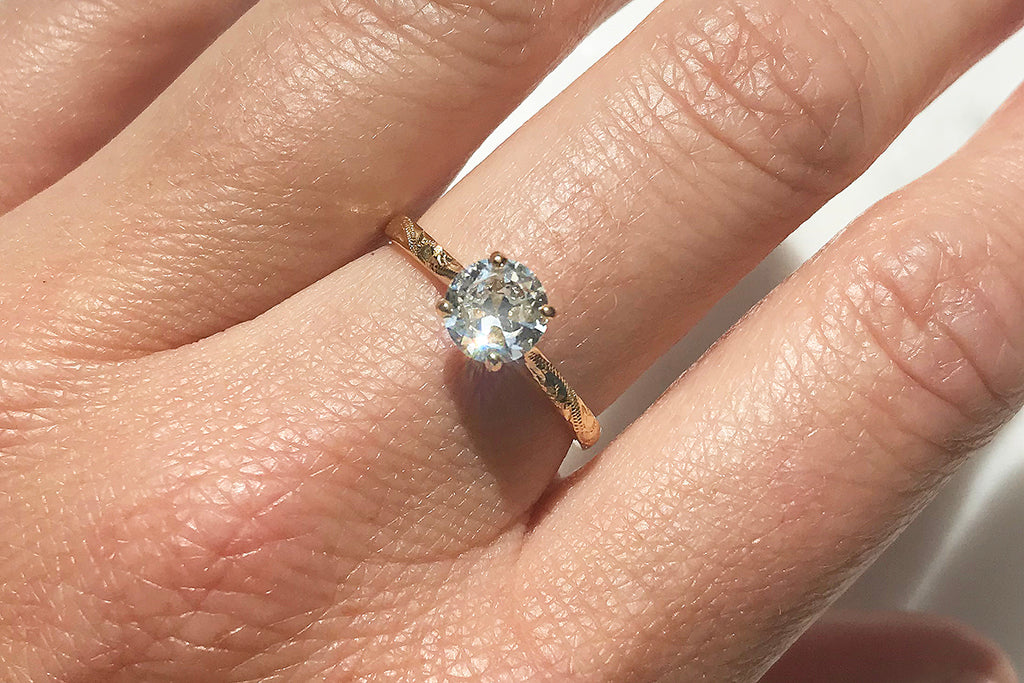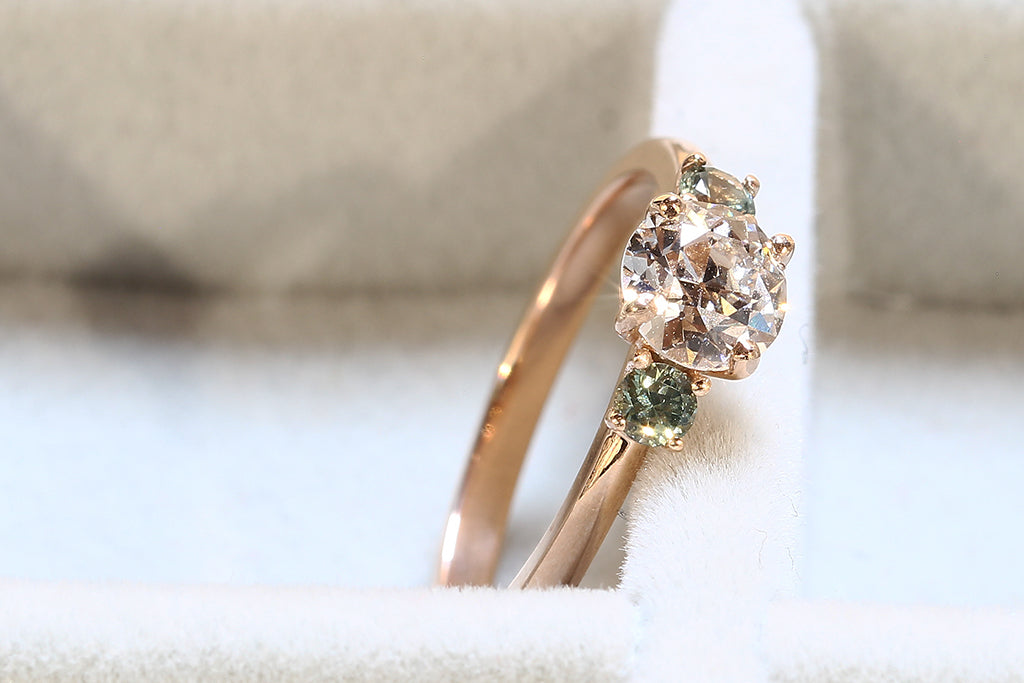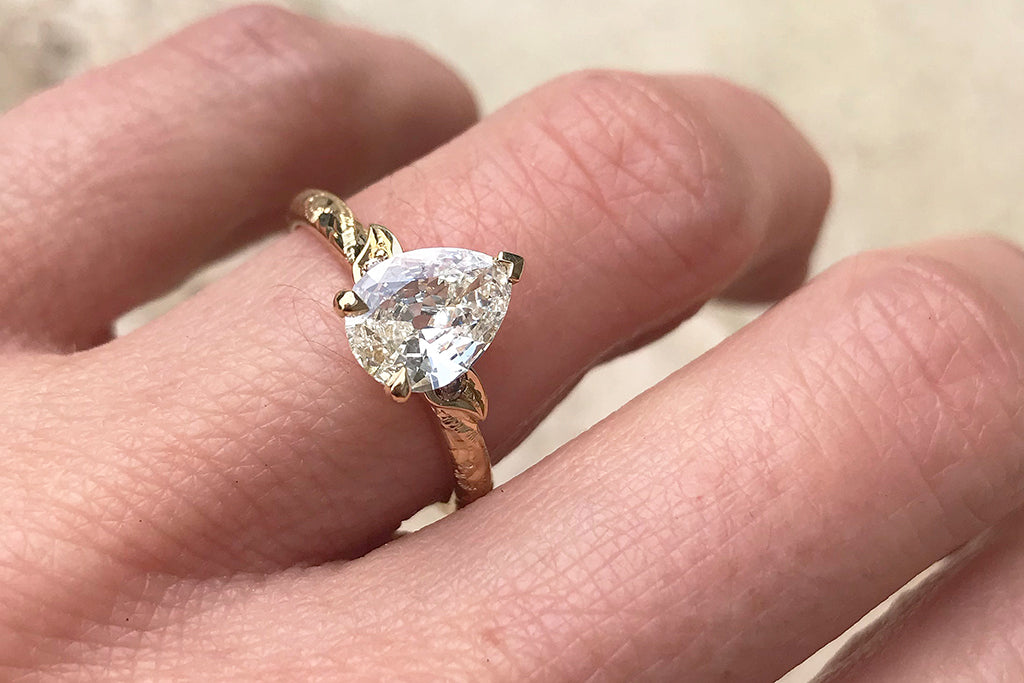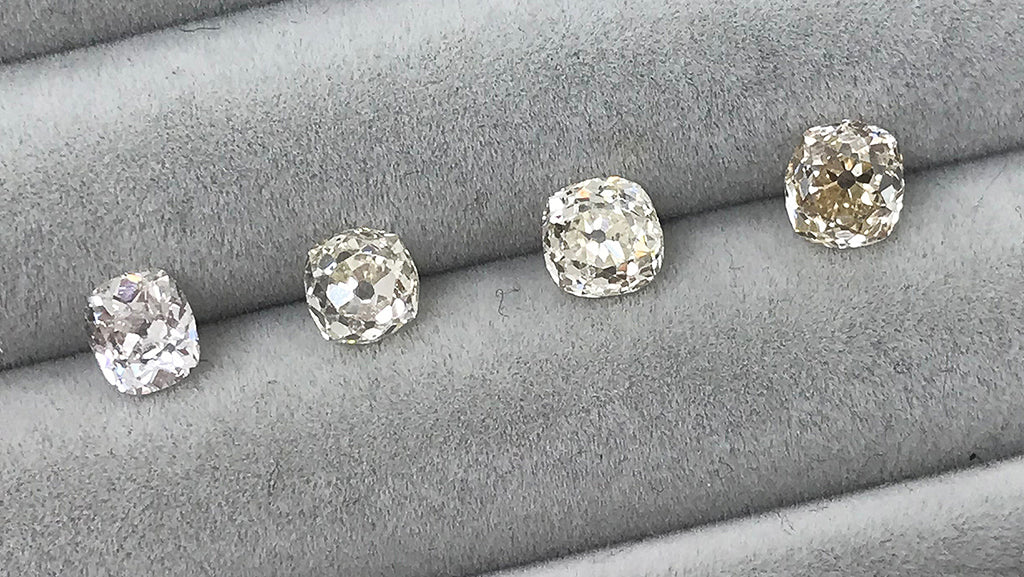Your Cart is Empty

Global warming has reached crisis point and it’s vital that we slow the rate at which we’re consuming water, land and energy. We'll never stop supporting small-scale miners, because their livelihood is legitimate - but it's time to start celebrating materials already above-ground too.
Alongside our traceable newly mined diamonds, we also offer recycled old-cut diamonds. By the nature of vintage, reclaimed diamonds can't be traced to their original source. We understand that this lack of transparency doesn't sit comfortably with everyone, but the beauty of recycling diamonds is in minimising the need for further mining - offering a beautiful unearthed gem a second lease of life instead.
Whether you wish to commission a new engagement ring from exclusively old materials or you’ve inherited a special diamond that you wish to repurpose, you’re speaking our language. Mother Nature is too generous with her gifts for us to overlook what is already available to us.

Transforming a rough stone into a shapely, faceted gem, the art of diamond cutting is perhaps almost as old as the human relationship with diamonds themselves; with historical evidence suggesting that the practise began in India as early as the 4th century BC.
Advances in knowledge, skill, technology and trends have given rise to numerous variations of diamond cut throughout history. Here are some of the most popular cuts to predate the popular round brilliant cut of today…
Rose cut diamonds:The rose cut originated in India and became favoured in Europe as early as the Renaissance era of the 15th and 16th centuries. Its name is an homage to its resemblance to a rosebud’s petals, a flat base and a domed top accommodating anywhere from 3 to 24 triangular facets. Rudimentary and organic, the rose cut maximizes the diamond's surface area, lending it a soft, flickering glow significantly more subtle than the brilliant sparkle of modern diamond cuts.

Old mine cut diamonds:The old mine cut (or cushion cut) enjoyed its heyday from the early 18th century to the latter end of the 19th century, and is now most commonly found in jewellery of the Georgian and Victorian eras. It exists as an evolution of the 33-facet cushion-shaped Peruzzi cut of the 1700s and is considered the earliest version of the modern brilliant cut, as the first to utilise 58 facets. It’s thought that the term ‘old mine cut’ entered the common vernacular in the late 1800s, at a time when diamond production in Africa began to eclipse that of the ‘old mines’ of Brazil and India. Any diamond originating from Brazil or India and cut with 58 facets and a squarish shape was labelled an old mine cut. Early diamond cutters formed old mine cut diamonds with the use of other diamonds as cutting tools, since the diamond is the hardest known natural substance on earth and thus only capable of being sliced by a fellow diamond. Naturally, this laborious technique of rubbing two diamonds together by hand resulted in dimensions that varied from stone to stone. Every old mine cut diamond is totally unique; often endearingly lumpy and always bursting with personality.

Old European cut diamonds:The Victorian era of the late 1800s was one of progression, an Industrial Revolution ushering in a number of inventions that would go on to change the world; from the automobile to electricity and indoor plumbing. Unsurprisingly, diamond cutting advanced significantly during this time. The introduction of the steam-powered diamond lathe in 1874 helped to refine and standardize the way diamonds were cut, offering cutters a little more precision and control. Not only did this give rise to the round shape, but it enabled cutters to cleverly modify the proportions of those 58 facets, creating greater scintillation. An important transition to today’s round brilliant-cut, this interpretation is now known as the old European cut. At Lebrusan Studio, ‘old cut’ is a blanket term that we use to refer to any sparkler that originated from within this epoch. For design purposes, round old European cut diamonds are those that we tend to use most often.

To learn more about the structural differences between old cut diamonds and their modern-day brilliant cut counterparts, check out this blog post.

Modern-day technology makes the mining, cutting and distribution of diamonds quicker than ever – and that’s before we’ve taken the lab-grown diamond phenomenon into consideration. In fact, diamond production is at an all-time high, with roughly 130 million carats mined annually. (For context, it’s thought that annual production in the 1870s was well under one million.) Comparative to contemporary, machine-cut stones, old cut diamonds are much rarer, and therefore carry more appeal for those who appreciate jewellery with antiquity and storytelling qualities.
What’s more, the organic process by which old cut diamonds are shaped and faceted by hand means no two stones are the same, making each little marvel a rarity in its own right.

According to the Gemmological Institute of America (GIA), the round brilliant cut is the most popular diamond cut of today, with 60% of couples choosing this timeless variation for their engagement ring. Its 57 perfectly symmetrical facets are designed to maximise the natural brilliance of a diamond, creating unparalleled sparkle that will arguably never go out of fashion. It’s this popularity and perfected formula that afford the round brilliant cut the highest resale value and ability to retain value over time.
Meanwhile, most old cut diamonds are valued a little lower than round brilliant cut diamonds of a similar weight. Although much rarer, there is currently less desire for older cuts, and demand is of course the greatest driver of value.
What’s more, the market value of most diamonds today is based on the 4 Cs: colour, cut, clarity and carat weight. Naturally, machine-faceted diamonds tend to score higher in the cut and clarity stakes than their hand-cut predecessors which, although gorgeous, are technically less brilliant. Some old cut diamonds are simply too old to conform to the margins of the universal 4 Cs system at all, which was only introduced in the 1950s.
Although a respectable 4 Cs grading creates objective market value, at Lebrusan Studio we appreciate natural materials for their alchemy. Every mined diamond was formed over billions of years, withstanding extreme heat and pressure to emerge from the rubble as a unique feat of nature. The older relics still in circulation today tell stories of resilience over multiple lifetimes. What could be more magical than that?
Love, Arabel & Team
